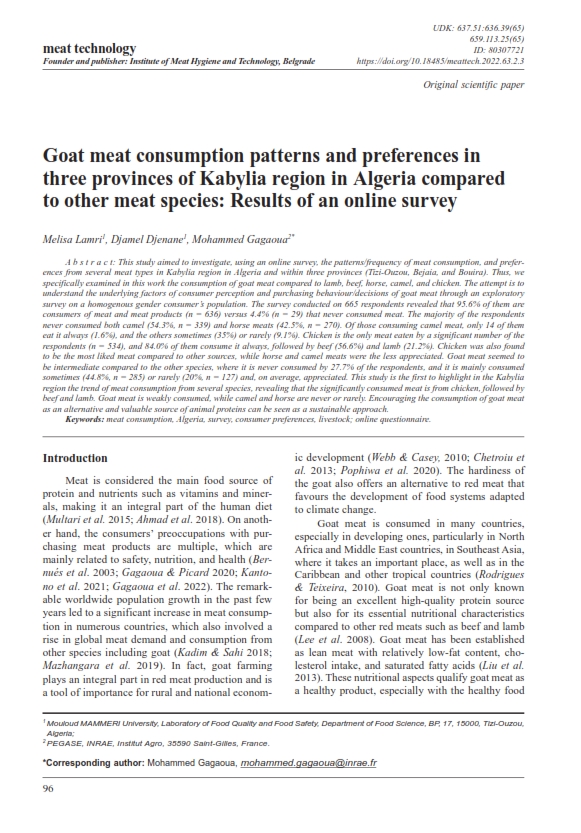Goat meat consumption patterns and preferences in three provinces of Kabylia region in Algeria compared to other meat species: Results of an online survey
Abstract
This study aimed to investigate, using an online survey, the patterns/frequency of meat consumption, and preferences from several meat types in Kabylia region in Algeria and within three provinces (Tizi-Ouzou, Bejaia, and Bouira). Thus, we specifically examined in this work the consumption of goat meat compared to lamb, beef, horse, camel, and chicken. The attempt is to understand the underlying factors of consumer perception and purchasing behaviour/decisions of goat meat through an exploratory survey on a homogenous gender consumer’s population. The survey conducted on 665 respondents revealed that 95.6% of them are consumers of meat and meat products (n = 636) versus 4.4% (n = 29) that never consumed meat. The majority of the respondents never consumed both camel (54.3%, n = 339) and horse meats (42.5%, n = 270). Of those consuming camel meat, only 14 of them eat it always (1.6%), and the others sometimes (35%) or rarely (9.1%). Chicken is the only meat eaten by a significant number of the respondents (n = 534), and 84.0% of them consume it always, followed by beef (56.6%) and lamb (21.2%). Chicken was also found to be the most liked meat compared to other sources, while horse and camel meats were the less appreciated. Goat meat seemed to be intermediate compared to the other species, where it is never consumed by 27.7% of the respondents, and it is mainly consumed sometimes (44.8%, n = 285) or rarely (20%, n = 127) and, on average, appreciated. This study is the first to highlight in the Kabylia region the trend of meat consumption from several species, revealing that the significantly consumed meat is from chicken, followed by beef and lamb. Goat meat is weakly consumed, while camel and horse are never or rarely. Encouraging the consumption of goat meat as an alternative and valuable source of animal proteins can be seen as a sustainable approach.





